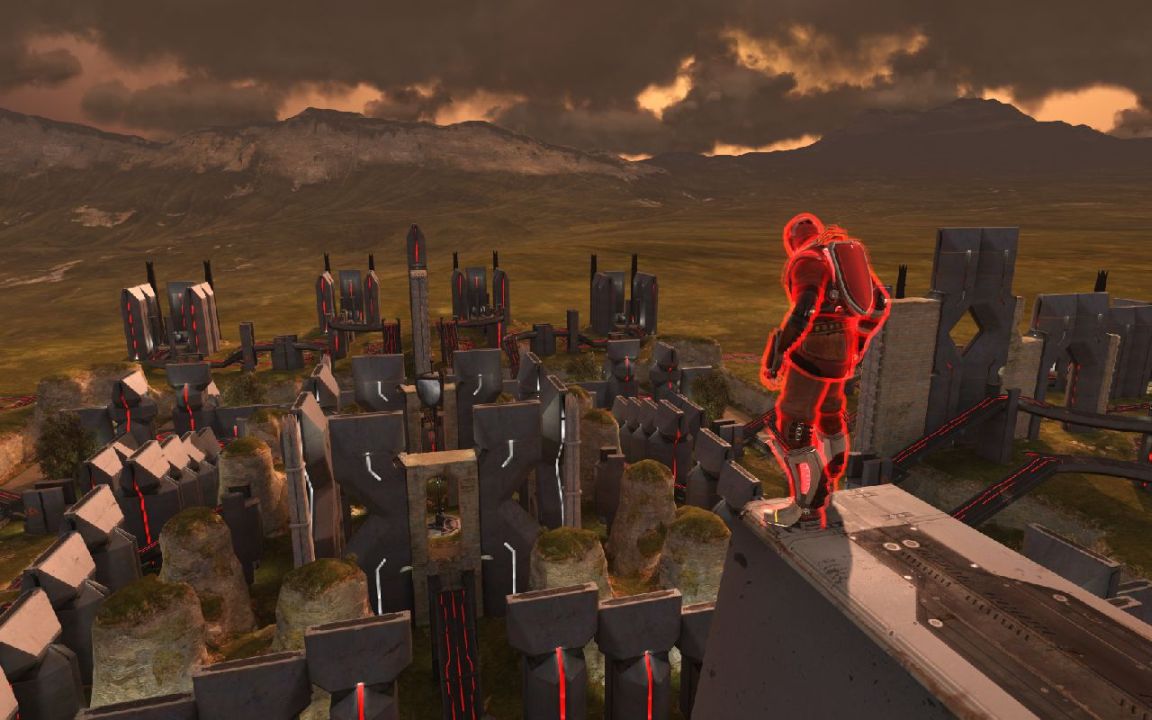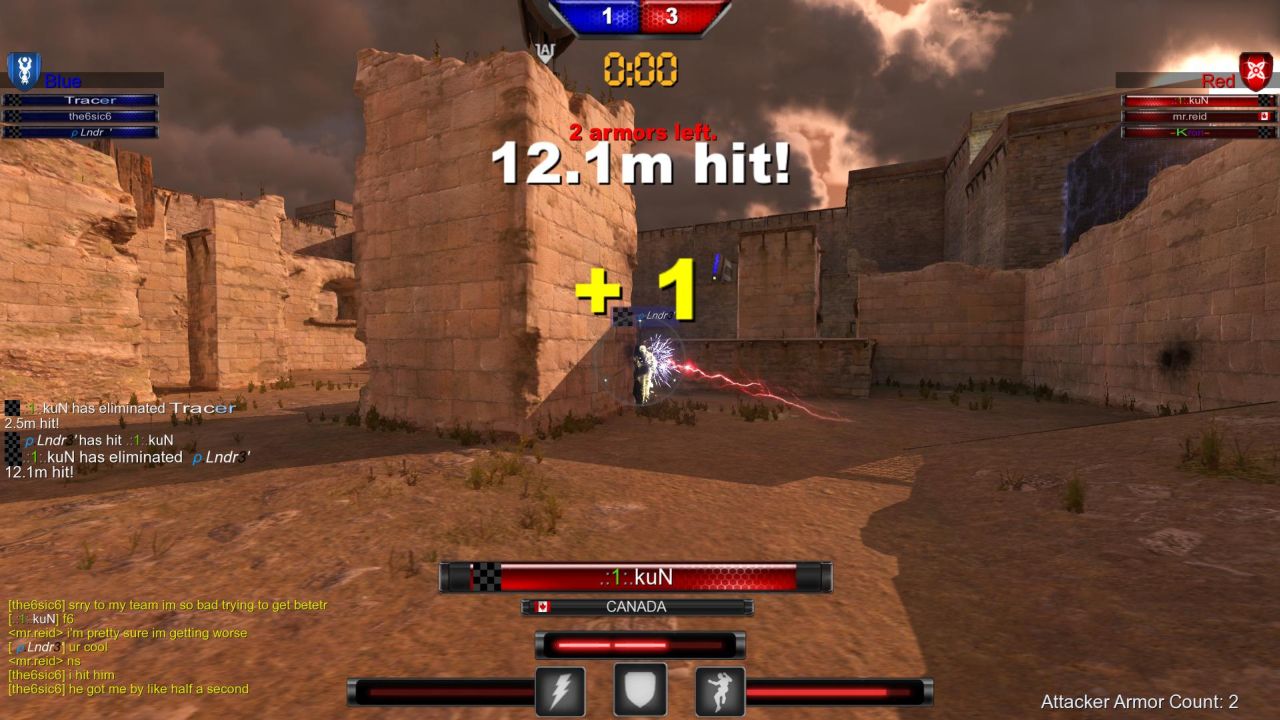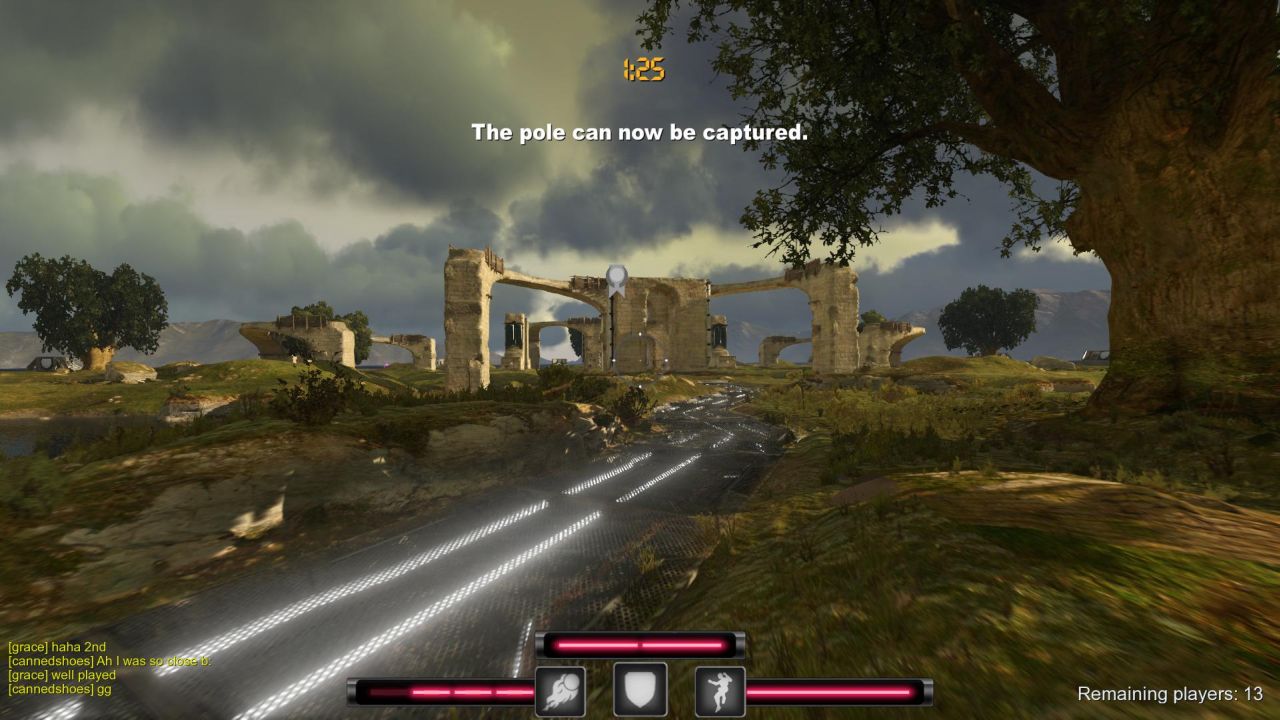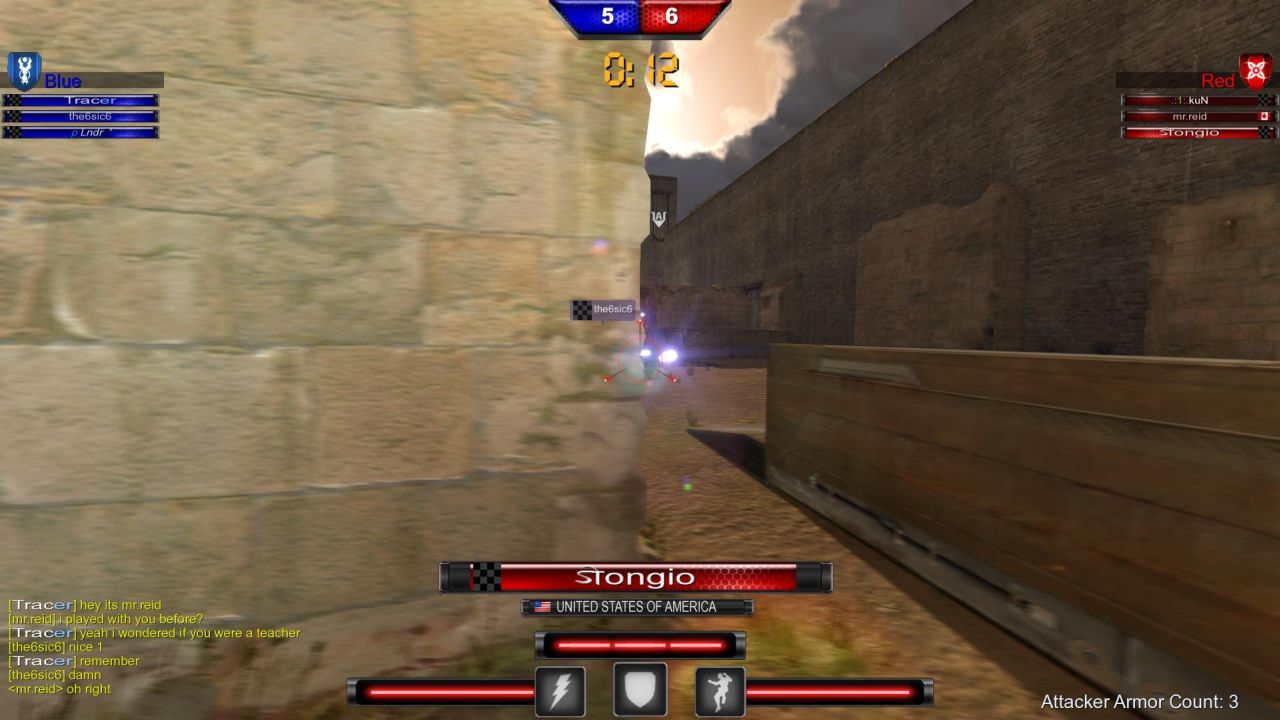ShootMania Storm Review
It’s hard to know what inspired Nadeo, the developers known exclusively for their crazy track-focused racing franchise Trackmania, to jump into the competitive shooter market. Whatever the reason, the developers who have focused so diligently on providing a single series of unique racing games have again come up with a really good formula for a competitive and precise experience, only this time, you are shooting at your opponents rather than trying to eke out a better time than them. Amazingly, Nadeo manages to execute their vision of an arena shooter almost completely successfully, offering up super smooth controls, inherent balance and stellar net code. While Shootmania’s brand of fast, precise and lethal gameplay might not suit everyone, and while existing modes feel a bit limited, those who are looking for a chance to hone their aim and twitch skills should absolutely check this game out.
As in Trackmania where everyone drives the same car on a mechanical level, you generally don’t have any say in what weapon you use going into a Shootmania match. The different utilities you will use to eliminate other players (you don’t ‘kill’ people in Shootmania) are determined by the game mode and map. The basic weapon that is found in most modes is a sort of rocket launcher that fires slow-moving projectiles somewhat akin in function to the basic soldier weapon in Team Fortress 2. You can fire four shots in quick succession before you need to wait for your shot meter to recharge, which occurs automatically but slowly after each shot. The balls of light that you emit when using this weapon require you to lead targets, but if seen coming from a distance can be dodged fairly easily, making hitting an opponent quite a challenge. When your shot hits another player with any weapon, a distinctive sound plays and a big ‘+1’ will flash on screen, a tidbit of stimuli you will come to crave.

The second weapon is the ‘rail’ ala Quake, a totally accurate beam of death that has negligible travel time. Some modes use the rail as the default weapon, while in other situations rail platforms grant players access to the weapon as long as they stand on the surface. The third weapon is a sort of grenade launcher that allows you to shoot a slow-moving orb that will attach to the first surface it comes into contact with and explode after a couple of seconds. This weapon is usually contextual and players will be switched to it in underground areas. One thing that players will need to adjust to is the fact that there are no weapon models; only the crosshair changes as the weapon type does. All three weapons are fun to use, and the lack of different weapons means the emphasis is placed squarely on the different modes and interesting movement mechanics featured in the game.
While the movement in Shootmania might initially seem fairly standard, there is a great deal of depth to it. A bit like the Tribes games there is a momentum system where the speed you move depends on the slope of the surface and the surface type itself. There is also a stamina bar that is linked to jumping, sprinting, and gliding depending on the situation. There is one button for using stamina, and what happens depends on the surface you are on. If you are on a normal surface, pressing the button will simply make you jump. However, if you are running and hold down the button, the jump will transition into a short sprint. On some surfaces, holding down the stamina button will make you sprint without jumping. If you are in the air, holding down the button will extend your jump by a few meters or if you are falling straight down, you can slow the rate of descent.

Fall damage is non-existent, and you can perform wall-jumps, or time your jumps so that you gain a huge amount of speed. Aiming and shooting at targets as they zip around the map is a very challenging endeavor, and the combination of high-speed parkour movement and predictive aiming make up the core of the Shootmania experience. Nailing another player while flying through the air with a well-placed rail is exhilarating and satisfying, and since everyone has access to the same weapons frustration is kept to a minimum since you know you can’t blame your death on an overpowered weapon.
While Shootmania may borrow some of its ideas from games like Quake and Tribes, the way it puts the mechanics together makes for a fairly unique experience. The mechanics have clearly been tested and refined to the point that they are difficult to find fault with; I got stuck in the terrain once or twice but generally everything works brilliantly. Hit detection is consistently excellent, and I did not experience any network lag to speak of, even when playing on servers with relatively high ping. Those with good aim and twitch skills will consistently be at the top of the leaderboard, but I was able to enjoy myself despite having relatively sluggish reflexes. One small deficiency is a lack of a proper tutorial, although new players gain an extra armor bar in some modes, and the intuitive controls are very easy to pick up.
If the game mechanics of Shootmania have been polished and refined to the point of near perfection, it feels like the developers are still trying to find a really good mode to fit the mechanics in to. There are a good number of different modes in Shootmania, most of which are enjoyable, but most of them feel like distractions rather than something you could sink a lot of time into. Currently the centerpiece competitive mode is Elite, where a single player equipped with a rail and three armor slots takes on three players who have rocket launchers and only a single health bar. The attacker must survive for around a minute before attempting to capture a ‘goal’ while the defenders try and eliminate the attacker. This is a fun, quick mode, but it is also quite simple and I found myself wishing there was a bit more to it after a few hours of play.
If Elite proves too intense for those looking to simply have fun with the game, Royal sees 16 players in a free-for-all fighting to capture a goal that will disable respawns and trigger a wall of death that slowly closes in around the center of the map, forcing players into closer quarters until only one victor emerges. Battle involves two teams alternating on defense and attack trying to capture a series of goals on the other team’s side of the map. Other modes exist as well, and they are all fun for a time, but none of them feel substantive enough to support dedicated long term play for those of us who are not looking to enter tournaments and competitions. There are more than enough existing modes and content to justify the modest price tag, but the mechanics are so good it would be nice if a game mode with enough complexity to do them justice existed.

Fortunately, being a Nadeo game, the community has been provided with the tools to do just that. The excellent track editor from Trackmania 2 has been revamped and put into Shootmania, allowing for the creation of not just maps but also game modes. Good user made maps and modes are currently a bit hard to come by as the game just launched, but if the game breeds a community as dedicated as its racing brethren, some very interesting content could emerge. Shootmania also borrows the regional ranking system from Trackmania, with players competing on regional and national leaderboards by doing well in games. Servers are automatically filtered with player ranking in mind, although it would be nice if you could sort them by ping as well. One thing I found a bit confusing is that there are sub-menus and separate rankings for some different game modes but not others. There is also the usual Maniaplanet weirdness of earning ‘planets’ without the game telling you what they are for (vehicle skins in Trackmania, no idea in Shootmania) .
Apart from the somewhat obtuse layered menus, Shootmania is one of the most technically proficient games I have ever played. The game has a lot of graphics options to play with, and when everything is cranked up, the game looks very sharp with gorgeous lighting and skies, detailed environments and colourful effects. My powerful gaming PC ran the game with everything cranked all the way up at well over 100fps with no perceptible stutters or frame rate drops. My less powerful laptop (dual core Intel CPU, GT540m and 6gigs of ram) was able to attain playable frame rates when I turned everything down. I experienced nary an errant pixel or crash on either system; load times are quick, even when loading user made content, and the net code based lag is something I have yet to encounter.

The audio in Shootmania is also quite good, with weapons sounding rather cool; the rockets make a particularly neat sound as they whiz by your player. Different surfaces make different sounds when you run on them, and the energetic electronic soundtrack fits the science-fiction look of the game perfectly. Both the sounds and the visuals give the impression that you are playing something akin to parkour laser-tag rather than anything you would associate the term “first person shooter” with.
Once the novelty of the movement mechanics wear off and you have spent a few hours playing each of the six or so existing modes, you will have to make a decision: will you dedicate yourself to playing the game competitively, or will you simply view it as a highly entertaining distraction? Given my poor aim, my sentiment eventually fell into the latter category, but Shootmania gives a lot of incentive to get you playing it regularly with its regional rankings, competitions and general vibe of friendly rivalry. While I feel burnt out on the current maps and modes after around 20 hours play, I look forward to returning to the game every couple of months to see what new ideas the community has come up with using the editor and some imagination.
